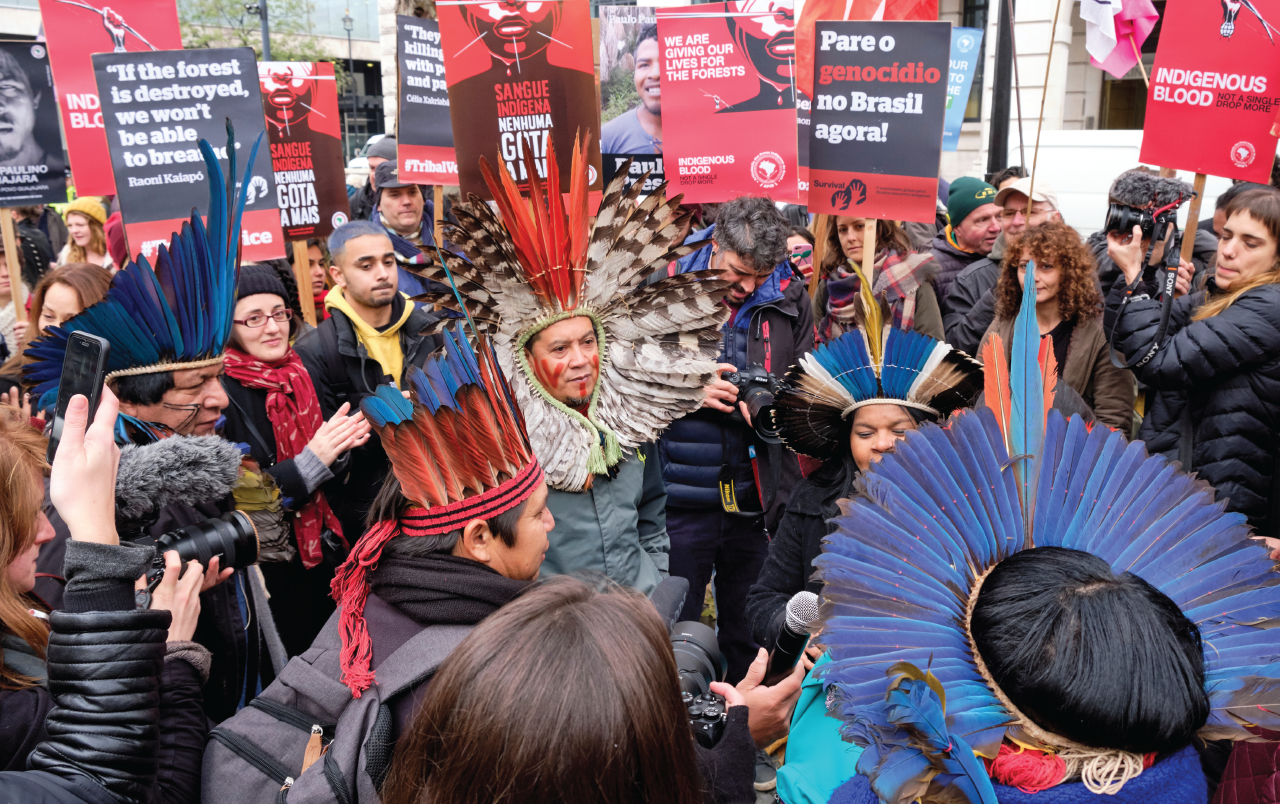The State of the SDGs report explores the barriers and solutions to the achievement of the 2030 Agenda.
A longer version of this article was originally published at Climate Diplomacy Magazine.
As their government fails to safeguard their rights, indigenous peoples in the Brazilian Amazon are looking abroad for help. How can the international community best support them?
Between 2018 and 2019, invasions of indigenous lands in Brazil increased by 134.9%, perpetrated mainly by illegal loggers, illegal miners and land grabbers involved in cattle ranching. During this same two-year period, an area equivalent to the size of Lebanon was deforested in the Amazon, a record high in ten years. Indigenous lands alone experienced a 74% increase in deforestation. As environmental crime networks become more powerful and deforestation advances, the Amazon edges closer to a tipping point where its rainforest could turn into a vast savannah.
To make matters worse, it is not only the survival of the Amazon forest and indigenous peoples’ lands that these developments threaten. They also endanger the lives of the leaders who take a stand for the environment and defend their communities’ rights. World-renowned activist and president of the Munduruku Indigenous Women’s Association Maria Leusa has spoken out against the invasions of the Munduruku Indigenous Territory. In 2021she had to flee her community. Men associated with illegal gold mining set her house on fire and threatened to kill her. Sadly, this is not an isolated incident.
The Brazilian federal government not only has failed to stop such violations but has often encouraged them. For instance, President Bolsonaro and his administration have cut the budget of FUNAI (National Indian Foundation) – the national agency for the protection of indigenous people – down to the bone. As a result, the agency today only has one public servant available per 10,000 indigenous people in areas of the Amazon with a high incidence of conflicts over land. The government also suspended the official process of demarcation of indigenous lands. It promoted legislation such as the Marco Temporal (Temporal Mark) bill, which denies indigenous peoples the right to their lands unless they can prove that they were occupying those areas in 1988. That was the year when Brazil’s current constitution came into force.
How can the international community help?
Due to a combination of sustainable resource management techniques that draw on traditional knowledge and environmental conservation and regeneration initiatives, indigenous territories are among Brazil’s most preserved areas. Indigenous lands have lost no more than 2% of their original forest coverage as of 2018, versus approximately 20% for the whole Brazilian Amazon forest.
To face these multiple threats and compensate for governmental inaction at the federal level, indigenous peoples are increasingly looking outside Brazil for help. Here is how collaboration with international partners and organisations can support indigenous causes in three key ways:
Firstly, indigenous peoples can bring up violations of their rights to international courts. For instance, in 2019, indigenous leaders and human rights organisations petitioned the International Criminal Court (ICC) to investigate President Bolsonaro over his dismantling of environmental policies and violations of indigenous rights. Although a final sentence could take years, activists hope that international coverage of such cases might at least slow the pace of the government’s actions against indigenous peoples’ rights.
A second way the international community can support indigenous peoples in the Amazon is to finance in loco activities. For example, in 2021, the French Agency for Development allocated EUR 5.7 million for a project called TerrIndígena (‘indigenous land’). It aims to strengthen governance mechanisms and protect the territories of 18 indigenous communities in the Amazon forest in Brazil, Colombia and Ecuador.
Thirdly, with the channels for international cooperation paralysed at the federal level due to the government’s lack of interest in promoting environmental protection and the consequent decrease in Brazilian credibility vis-à-vis foreign actors, indigenous peoples have demanded further participation in emerging paradiplomacy (subnational) initiatives. By way of example, indigenous groups have mobilised to ensure that they are consulted in the Amazon Consortium Green Recovery Plan. It is a platform recently launched by Amazon state governments to attract international funding for the conservation of the forest.
Despite their growing relevance, these three cooperation avenues also face significant challenges. Strategic litigation is often slow. Decisions take years or even decades to be finalised, at which point harm to the environment and affected communities may have become irreparable. Moreover, the demand for international funding sources focusing specifically on promoting sustainable livelihoods for indigenous and forest peoples remains higher than the offer. And Brazil continues to lack a coherent operational and normative framework to facilitate direct cooperation between external governments and subnational actors.
Yet, if the international community is committed to fighting climate change, it is well worth supporting the indigenous people in the Amazon.
Text editor: Gabriela Keseberg Dávalos


